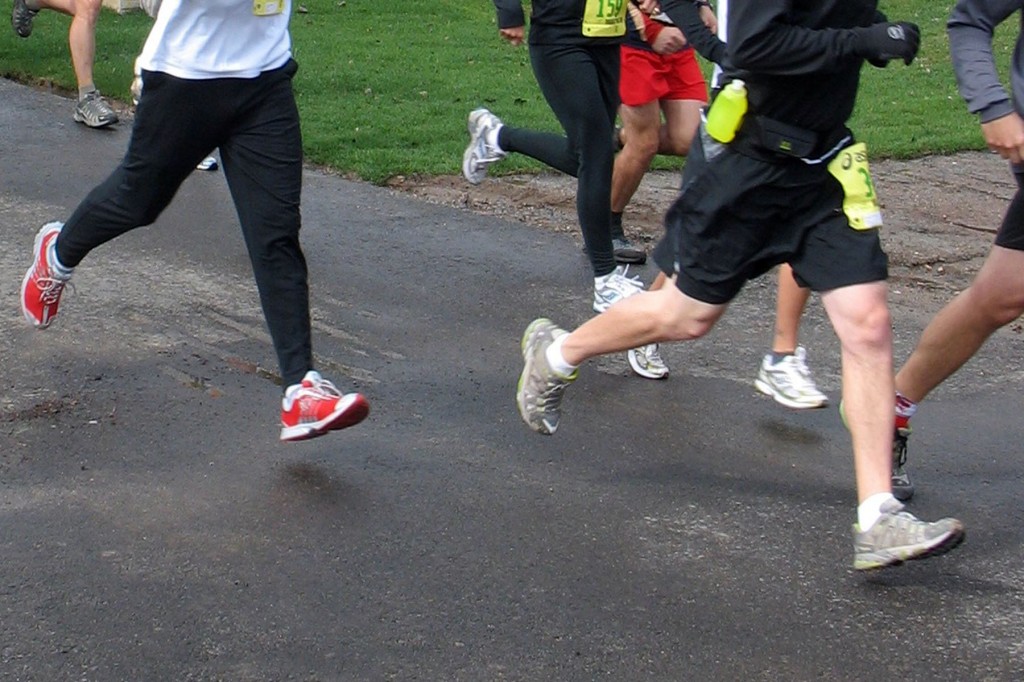Is physical activity, like running, safe? Most of the time, the answer is YES! The key is to rule out possible issues (especially as you age) which may make physical activity unsafe. More potential issues need to be screened the older you are and based on how healthy of a lifestyle you may have. Being well informed initially allows you to tailor an exercise program which can be safe and effective in maximizing your particular goals and needs.
How to Start?
I recommend that you take a Physical Activity Readiness Questionnaire (PAR-Q). The PAR-Q has been designed to identify the small number of adults for whom physical activity may be inappropriate or those who should have medical advice prior to initiating in physical activity.
The American College of Sports Medicine (ACSM) also offers information and a similar version of the Par-Q with clear guidelines on when a person should or should not see a physician before starting an exercise program. (When To See a Physician Before Exercising)
Assuming that you have been cleared for physical activity, let’s specifically discuss running. Let’s attempt to get one myth off the table first. Running is bad for the knees. This can be true and false. Let’s dive deeper. Running can be “hard” on the knees in certain circumstances:
- If you have significant degeneration of your knees, such as severe osteoarthritis (loss of the cushion between the knee bones known as the meniscus).
- You are morbidly obese.
- You have some sort of bone disease, such as osteochondritis dissecans, where you experience cracking in the articular cartilage of the bone and loss of blood flow (causing the bone to die, which is known as avascular necrosis).
- If you have had a prior knee injury such as a meniscus injury or surgical repair of the meniscus; micro fractures repair of the knee cartilage; or a total joint replacement in the lower extremity such as the knee, hip, or ankle.
It is possible that running may not be the best activity choice for you, but with proper training and a strong focus on technique, it is still possible.
Research indicates that running for the typical person will not cause excessive wear and tear or injury to the knee. If injury is already present, then running could possibly worsen it. It is true that running can lead to aches and pains, including conditions such as patellar femoral knee syndrome (runner’s knee). It is also true that sitting like a couch potato can also lead to knee arthritis and cardiovascular disease as well as a list of other medical conditions.
A vast majority of running related injuries can be easily avoided through proper training, proper running form, proper footwear, and proper recovery. Running is an excellent form of exercise and a wonderful stress reliever.
The key to a successful lifelong running program includes:
- Proper Training – Find the right balance of volume and intensity for you. Each one of us is capable of some running. The key is to discover the right amount for you to remain healthy and engaged in the activity.
- Proper Running Form – There are many different running styles and form. Some focus on a mid-foot strike while others, a heel strike. Some prefer a run/walk protocol or a power walking protocol. You may also be interested learning more about the Chi Running Technique (http://idahoezrunning.com/freedemo/). The key is to find a coach who can help you find the right technique for your particular body style and goals.
- Proper Equipment and Footwear – Your feet and knees absorb a bulk of the force as you run. Ensuring that you have adequate footwear is imperative. I highly recommend visiting your local running store for a gait evaluation. These professionals will properly fit you into a real running shoe. (The quality of a shoe from a big box store will be poor in comparison.) Your shoes should be changed every 300-500 miles depending on the style of the shoe and how much wear and tear accumulated.
- Cross Train – As big of a fan as I am of running, it shouldn’t be your sole form of exercise. It is an excellent form of cardiovascular exercise, but it doesn’t address strength training. Strength training is an important component to a healthy lifestyle. I cross train by performing CrossFit and through weight training multiple times per week.
- Vary Your Running – Don’t run on the same surface each time, and don’t run the same speed every time. Your body loves variety, and you will, too!
Running is well worth the effort and the risk of a potential orthopaedic related issue in order to avoid the risk of cardiovascular disease, diabetes, heart disease, cancer, obesity, and osteoporosis. Seek the advice of a physical therapist or fitness coach to help you train and recover properly. If a problem occurs, you will be armed with tips and strategies to deal with it before it becomes a major issue. Happy running!
Join our growing community on Facebook by liking The Physical Therapy Advisor! If you have a question that you would like featured in an upcoming blog post, please e-mail contact@thephysicaltherapyadvisor.com.

